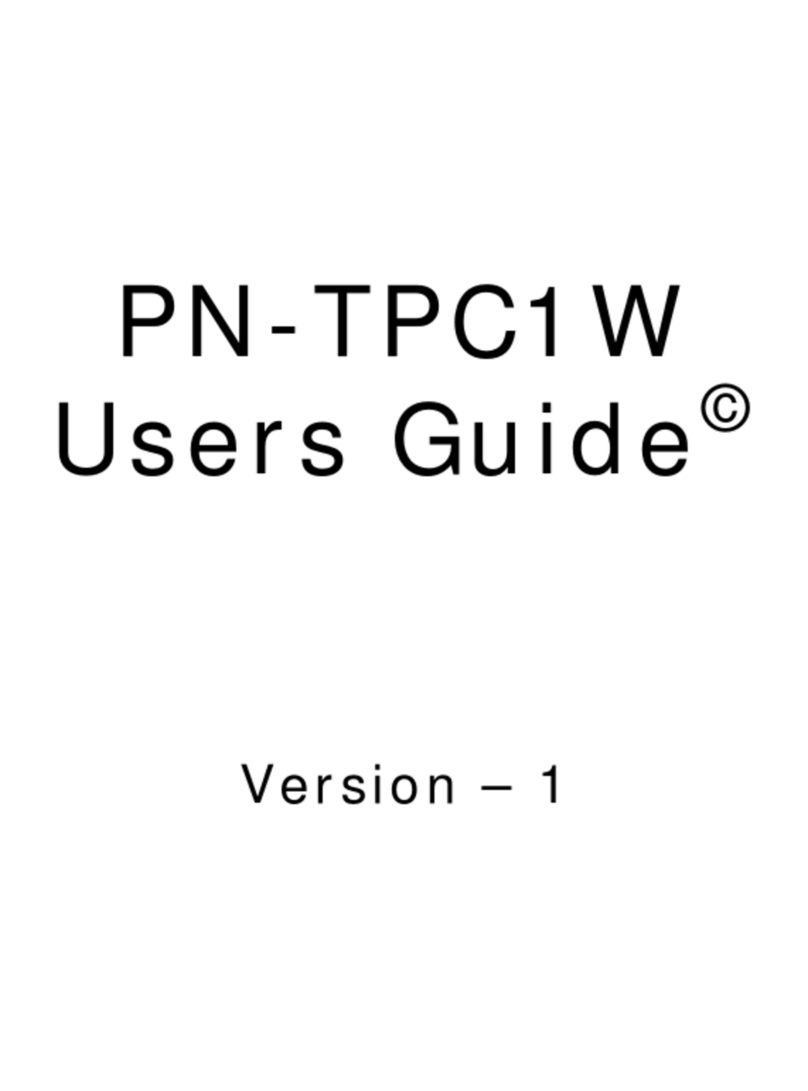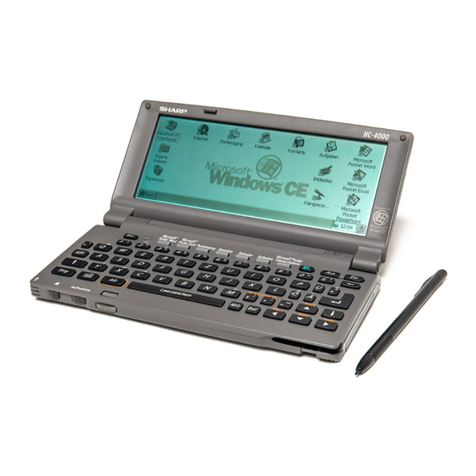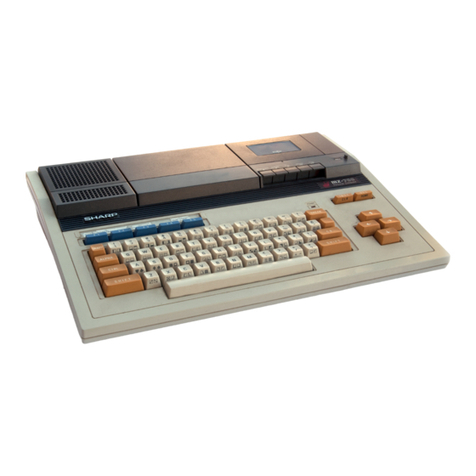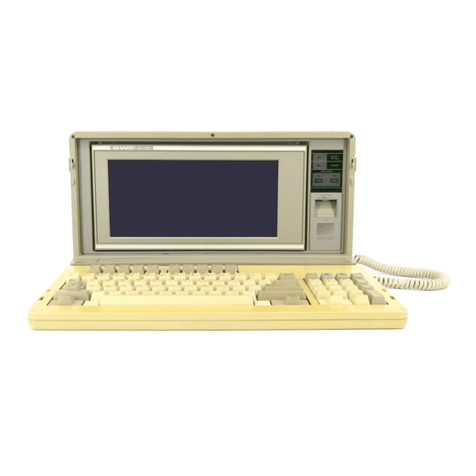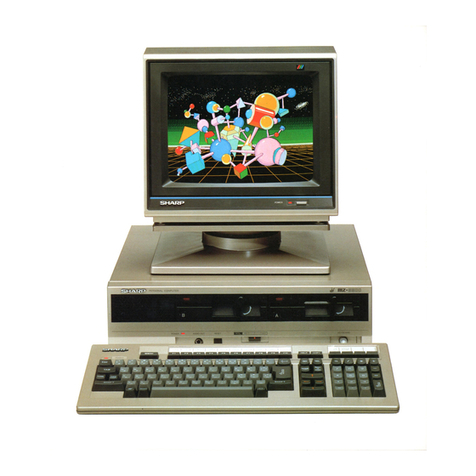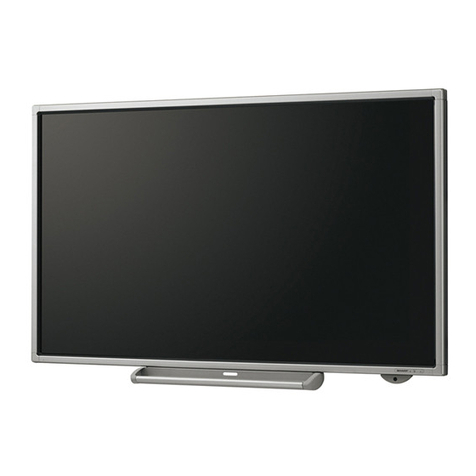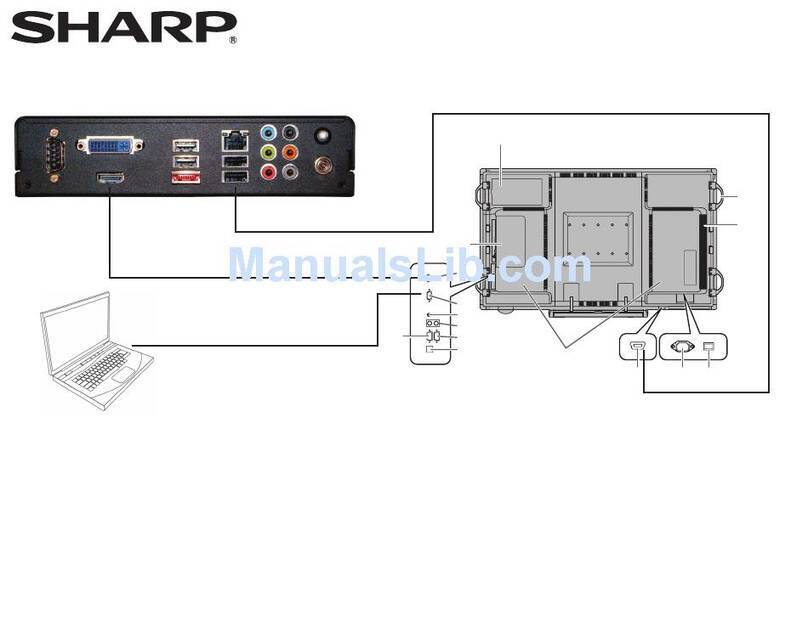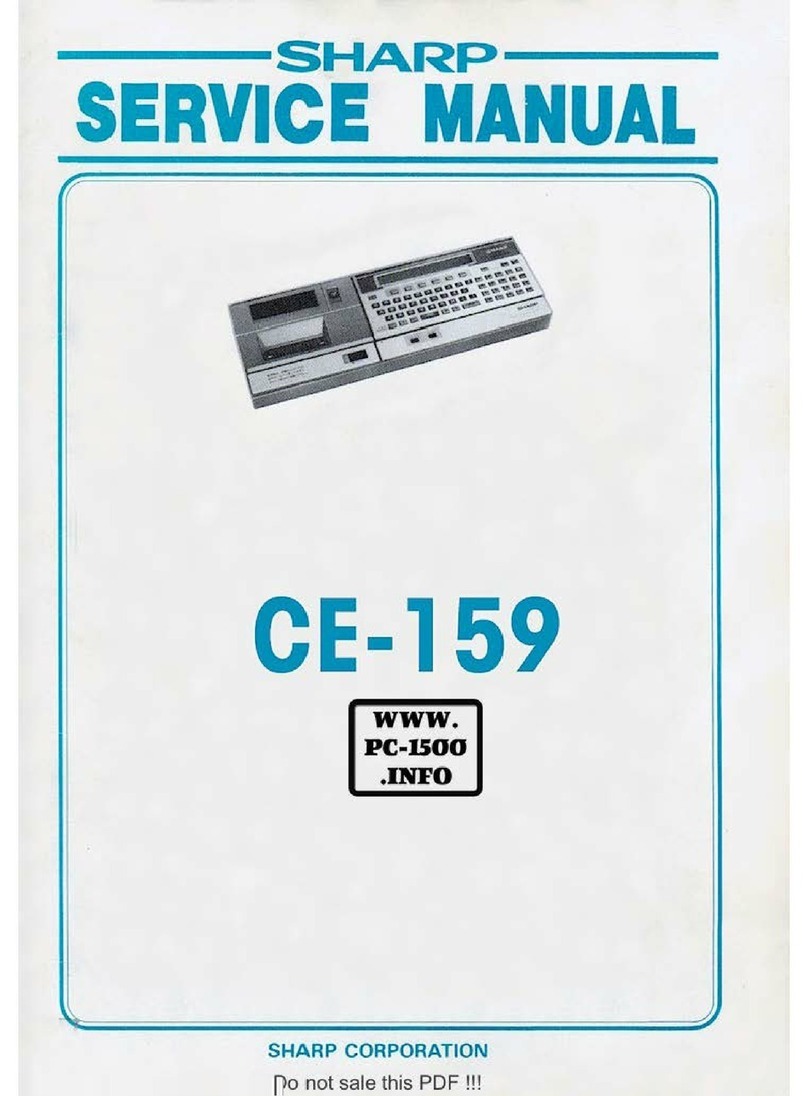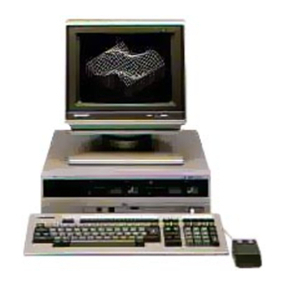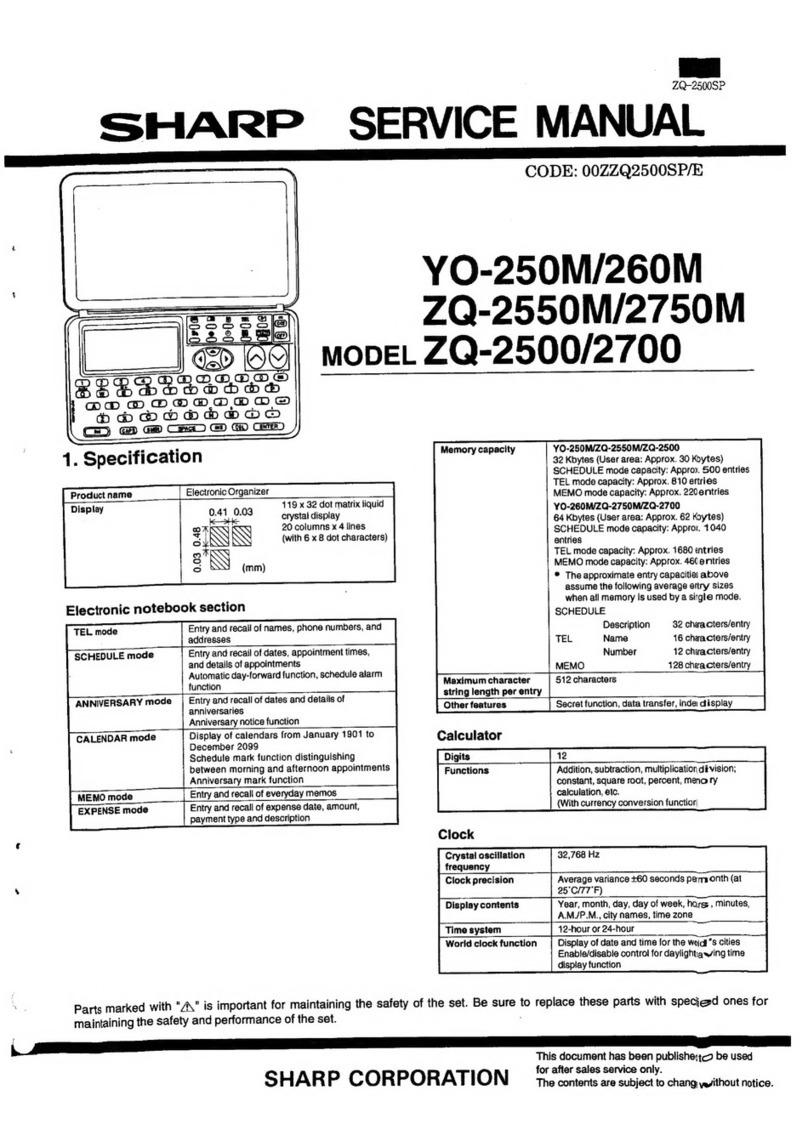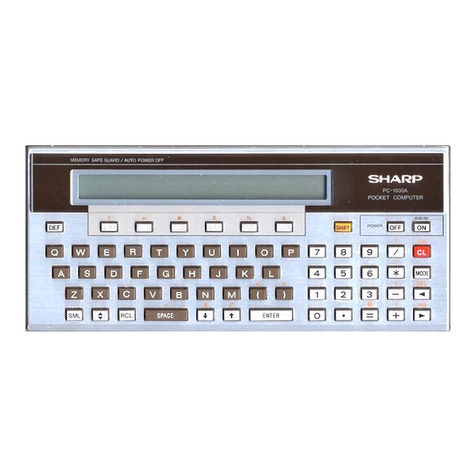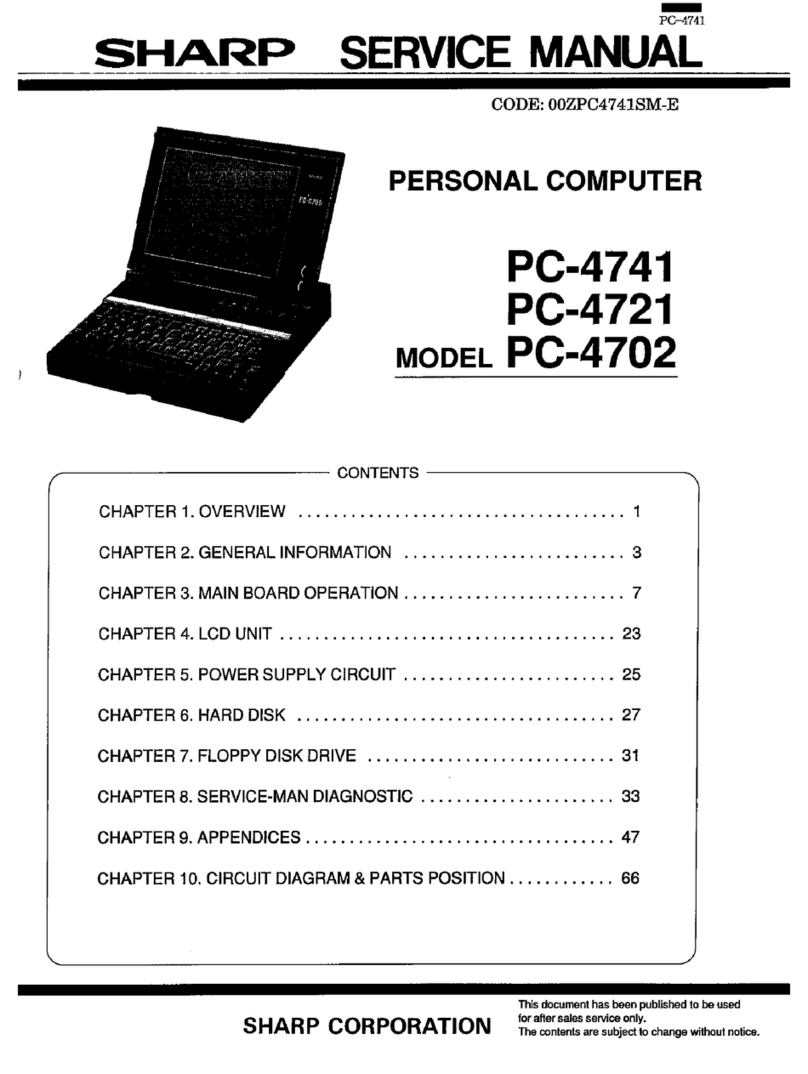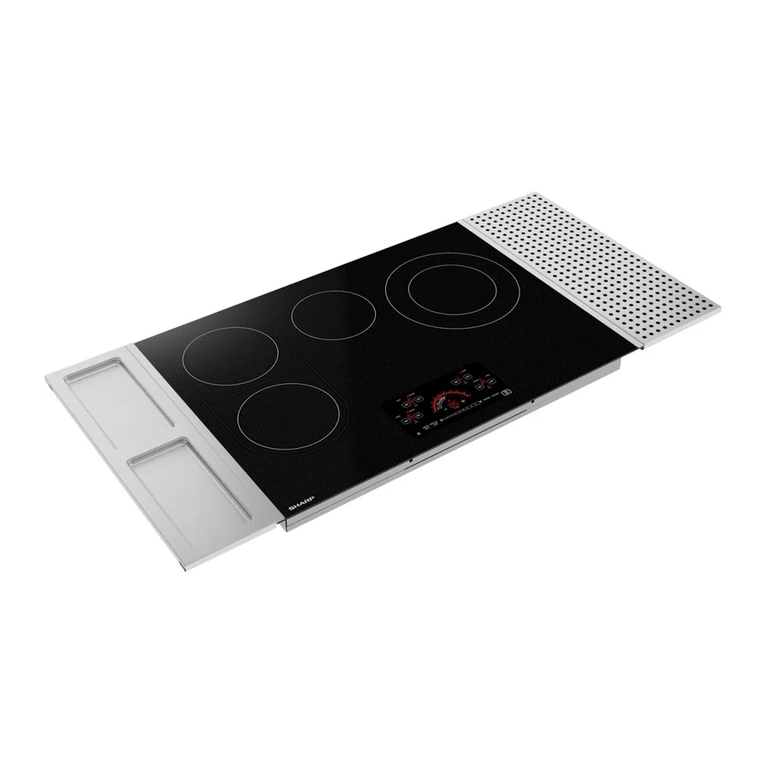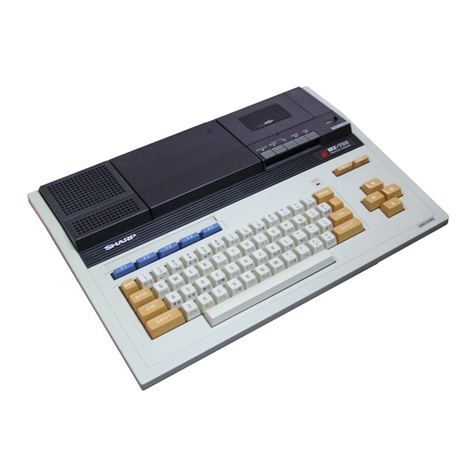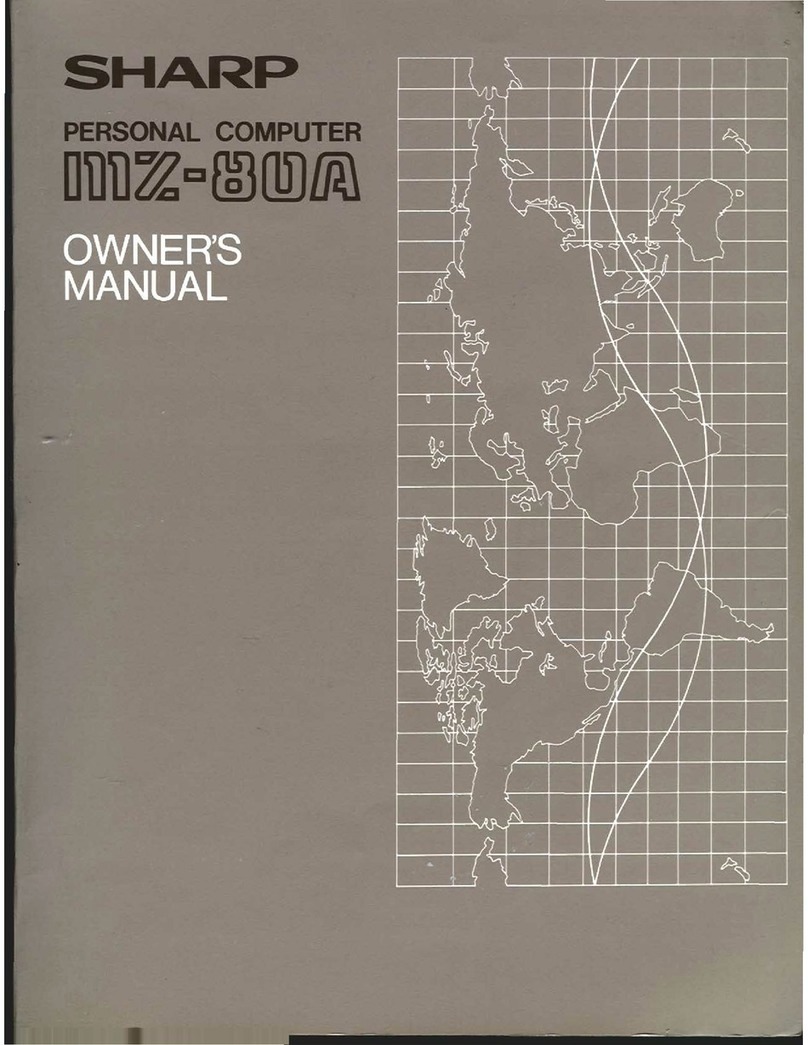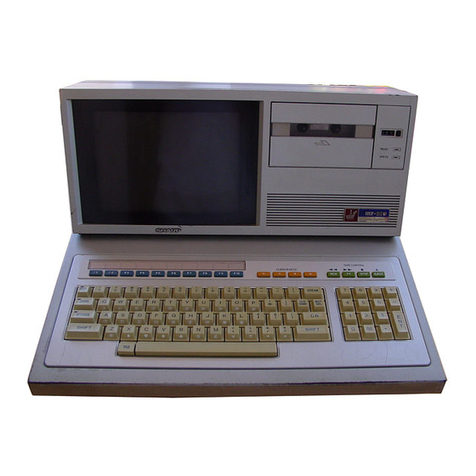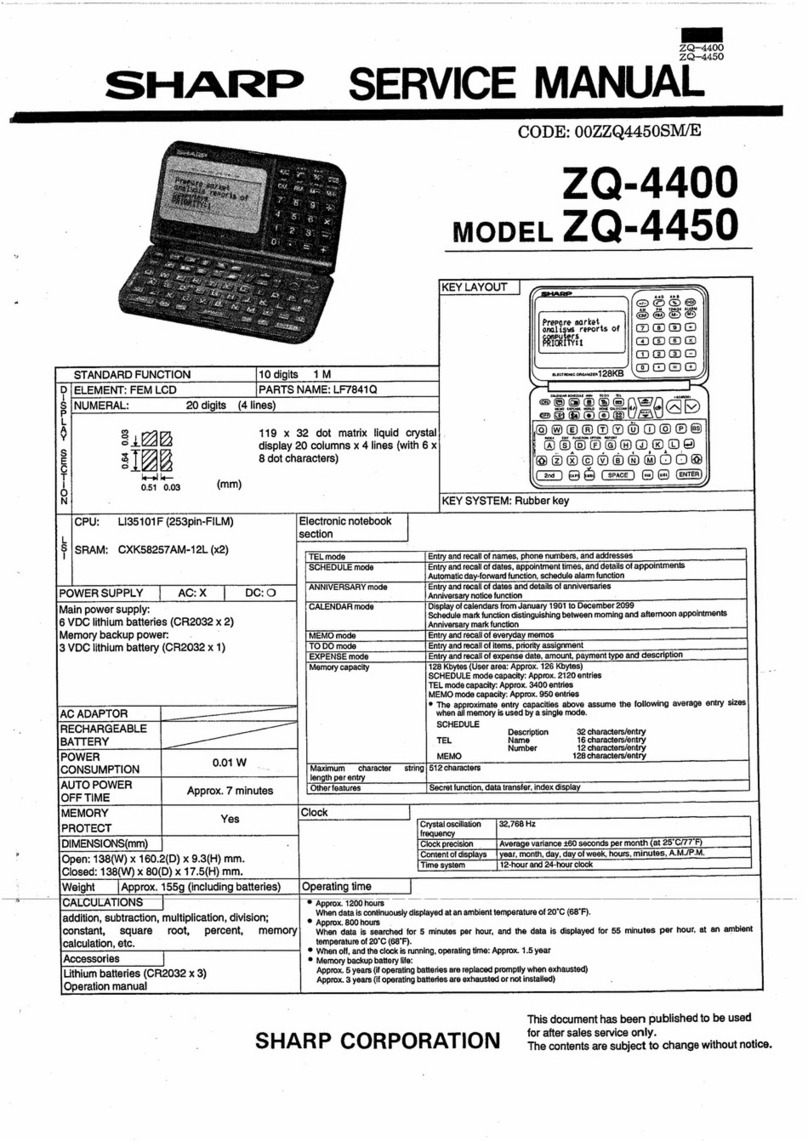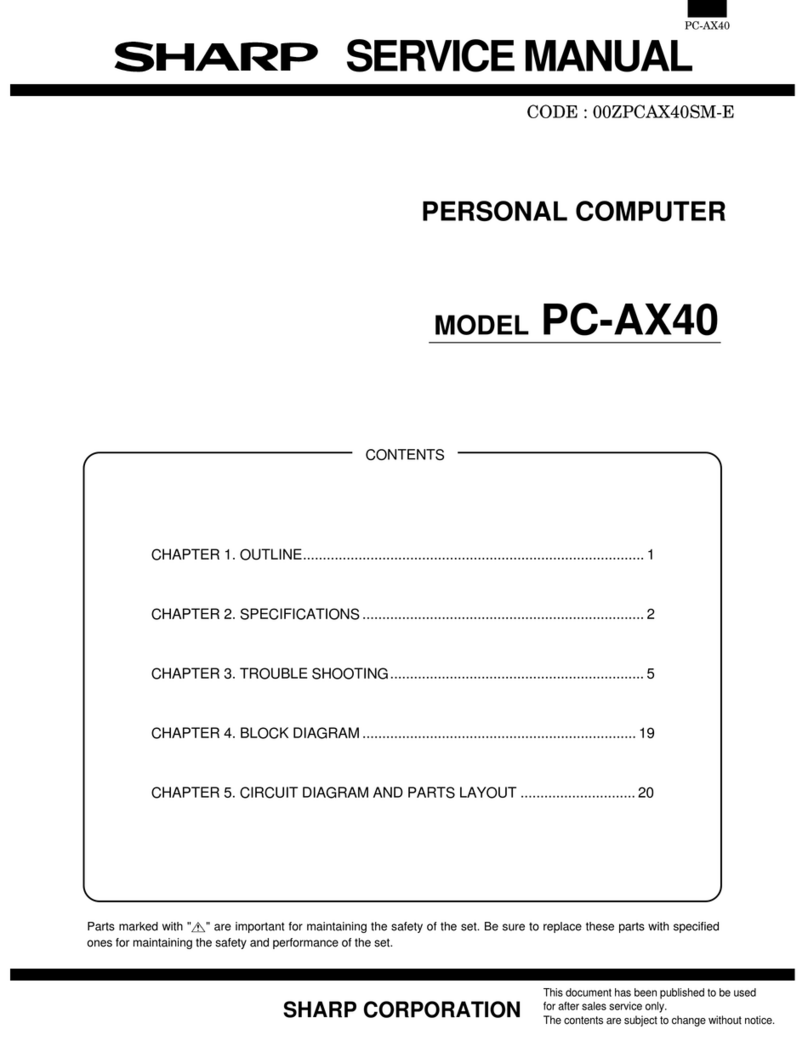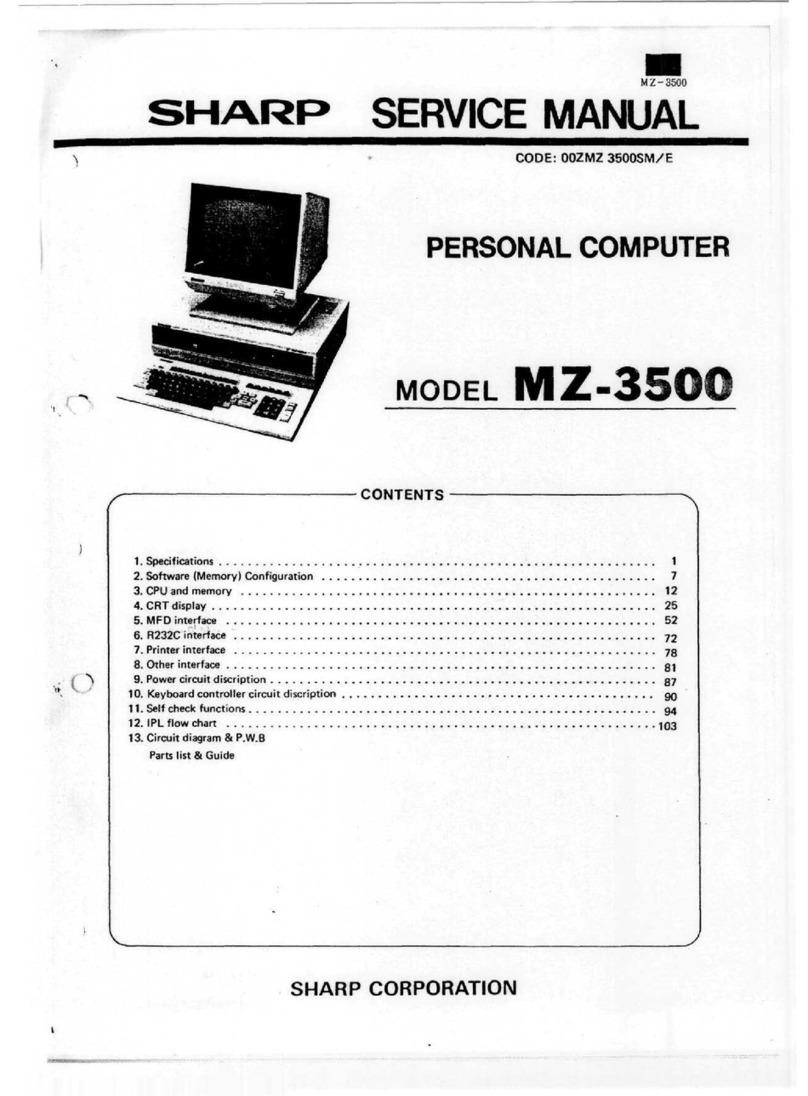SHARP
SERVICE MANUAL
CODE:
OOZMZ8OOIIIIE
PERSONAL COMPUTER
MODEL
MZ-800
MZ-1P16
MZ-1E20
Table of contents
t,
Specification
..
2.
Parts identification
..
3.
Systemdiegram
..
4.
Systemdescriplion
..
4·',
Memorymep
..
4-2.
CustomLSI
.....
4-2-1.
Memoryconlroller
...
4-2-2.
VOcontroller
..
4-2-3. Clock generator end
timing
generator
..
4-2-4. Display address generator
...
4-2-5. Scroll control circuit .....
..................................... 4
................................................... 6
..
9
9
9
.
.......................
12
.. ......... 12
..
.....
13
. ......................................... 15
4·2·6. VRAMdeta
inputloutpulcircuil
..
4-2-7. Register functions
....
.............................................................. 20
4-2-8. Pal1etcircuit .....
..
...........
25
4-2-9.
CRTC
register
map
•.
.
................................
26
4-2-10.
ROMconfigufation
...
............................................... 27
4-3. 8255 Programmable Peripheral Interface
...
4-4. 8253 Programmable Interval
Timer
..
.........
................................ 27
..
......
31
4-5. Printer interface
..
4-6. Programmable sound generator
.•
4-7. Joystick
..
4-8.Systemswitchsetups
...
5.
Powersupply
.....
MZ-1P16
.....
. ..................................................
31
.................................................................. 34
.........
35
. .....................................................
35
..
......................................................... 35
. ...................................................
35
SHARP CORPORATION
